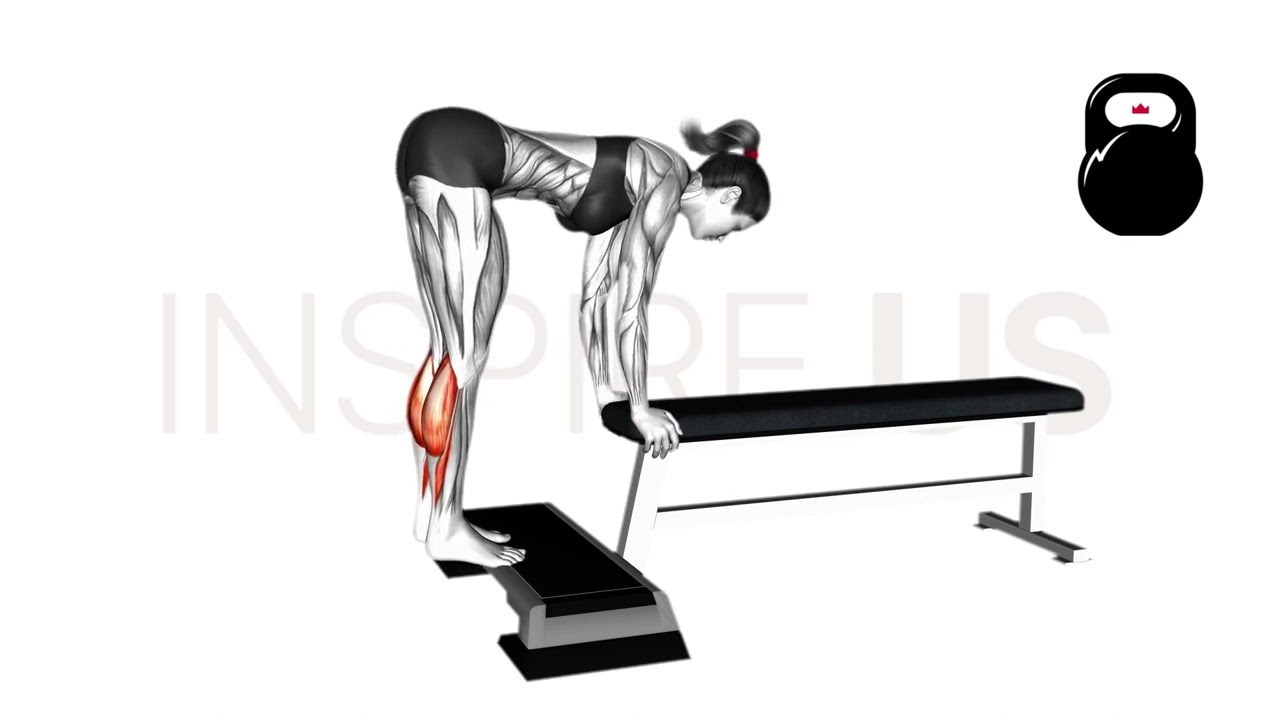Donkey Calf Raises: Benefits, Muscles Worked, and More
While the standard for calf muscle training is the ever popular standing calf raise, the donkey calf raise may in fact be better in terms of both safety and effectiveness.
But before incorporating this unusual looking calf exercise into a routine, it is important for lifters to have a firm grasp on just what makes it different from other calf raise exercises, and how best to leverage this to their advantage.
The short version of the donkey calf raise is that it is a traditionally bodyweight exercise performed with the lifter bent forward (hence the name) and the heels hanging from a platform, stretching the muscles of the calves to their fullest range of motion before following it up with a calf raise.
What is the Donkey Calf Raise?
In more technical terms, the donkey calf raise is a single-joint calisthenic isolation exercise often performed for high volume sets and a low level of resistance, though more advanced lifters will find that it is just as effective when loaded with a dip belt.
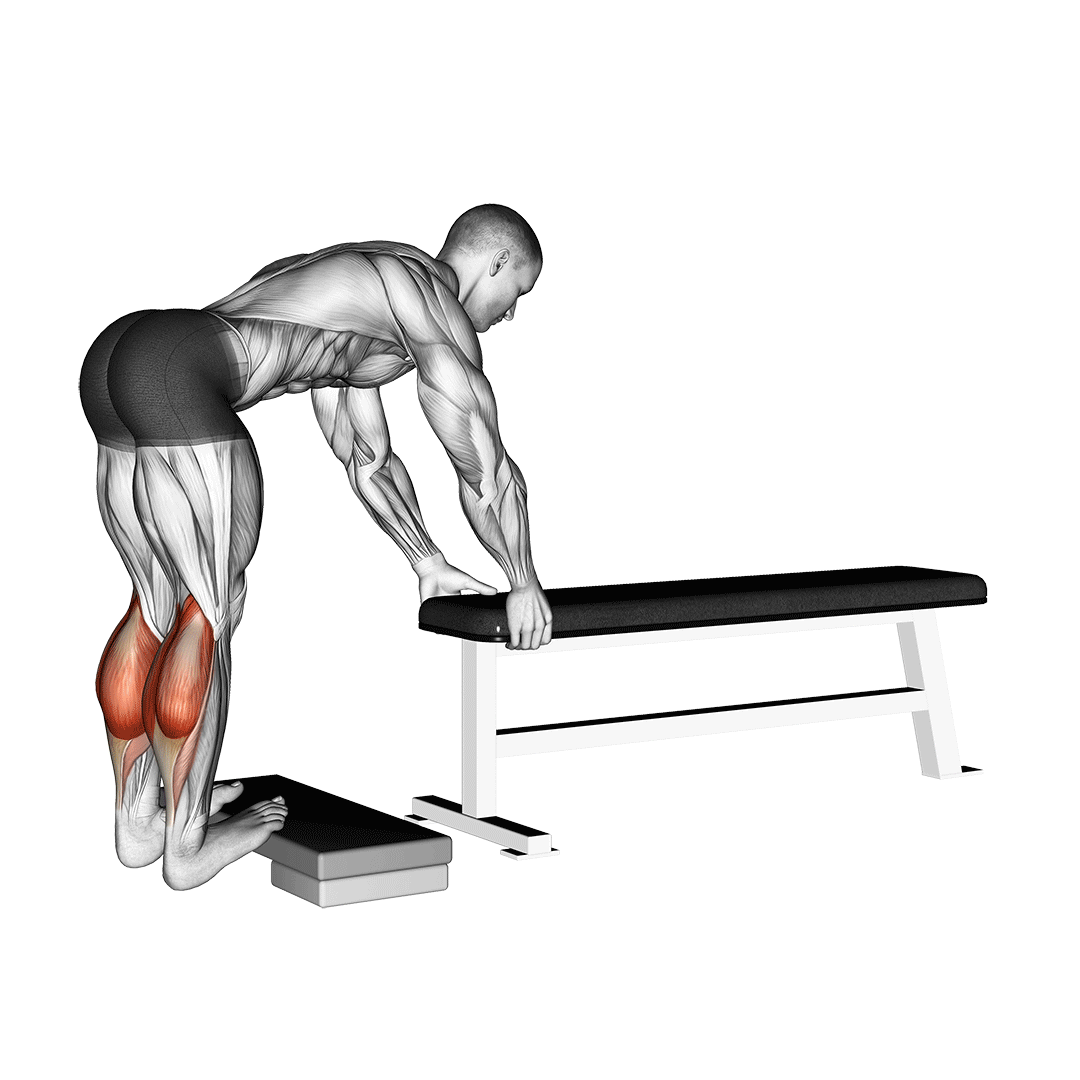
The donkey calf raise is particularly favored over the conventional calf raise due to its capacity for a fuller range of motion, as well as reduced strain on the upper body from loading the exercise.
Who Should Do Donkey Calf Raises?
Donkey calf raises require somewhat greater ankle and calf mobility than the standard calf raise, and as such are more suitable for lifters with at least an intermediate level of familiarity of resistance training.
In particular, calisthenic athletes or weightlifters wishing to avoid the usage of equipment may benefit from the donkey calf raise’s lack of need for resistance equipment.
Equipment Needed for Donkey Calf Raises
Donkey calf raises require no equipment other than a suitably elevated and stable object, like a plyometric box, weight plate, or stair step.
For lifters wishing to increase the difficulty of the exercise, they may add additional resistance in the form of a dip belt and weight plates - or with a smith machine bar atop their glutes.
How to Do Donkey Calf Raises
To perform a repetition of donkey calf raises, the lifter will place the balls of their feet atop the elevated object, allowing the heels to hang off the edge as they bend at the waist and hips, gripping a nearby object for support.
From this position, the lifter will then slowly lower their heels off the edge of the platform, stopping once they have reached the maximum range of motion of their ankles.
Pausing for a moment here, they will then contract the calf muscles and raise themselves up to their tiptoes before returning to the starting position, thereby completing the repetition.
What Muscles are Worked by Donkey Calf Raises?
As an isolation exercise, the donkey calf raise will solely target the two major muscles that make up the calves; the two-headed gastrocnemius that is immediately visible upon flexing the calves, and the underlying soleus muscle that aids in flexion of the foot.
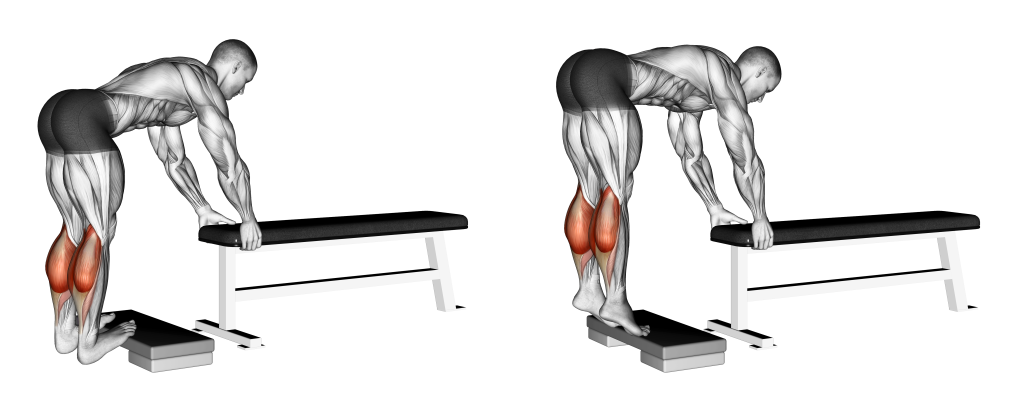
What Part of the Calves do Donkey Calf Raises Focus on?
When donkey calf raises are performed correctly, they place a far greater focus on the gastrocnemius muscle, rather than that of the soleus muscle.
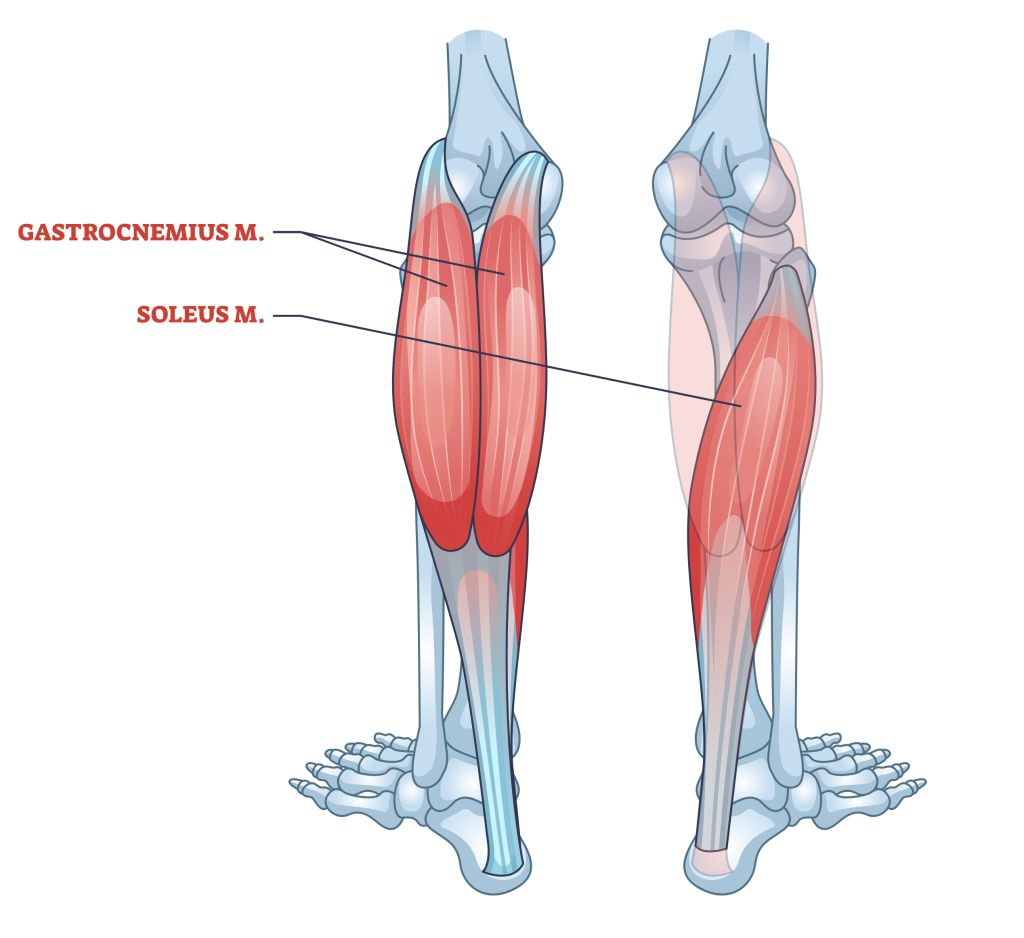
This is a boon for bodybuilders and other types of lifters concerned with the outward appearance of their calves, as the gastrocnemius contributes to not only the majority of the muscle mass of the calves, but also most of its definition as well.
What are the Benefits of Donkey Calf Raises?
Apart from the usual benefits of performing resistance exercise, donkey calf raises also excel in certain aspects of calf training - many of which involve reinforcement of the lower body and thoroughly training the calves in a manner difficult to achieve with other exercises.
Work the Calves Through a Full Range of Motion
In standing calf raises or machine calf raises, the calves are not worked through their fullest range of motion, as doing so would require the knees to remain fully extended while the heels are in a deficit.
While it is entirely possible to perform standing calf raises in such a manner, donkey calf raises include lower heels as a part of its mechanics - thereby guaranteeing that the calves are worked through a full range with each repetition.
Working a muscle through its full range of motion improves its flexibility and produces far superior hypertrophy than simply working a portion of said range, meaning that the donkey calf raise may be superior to the standing calf raise in terms of mass-building potential.
Highly Accessible and Requires No Equipment
Unlike other calf raise variations that require some form of weighted equipment at the least, donkey calf raises take advantage of the body’s own weight as well as a lengthy time under tension - thereby negating the need for any sort of equipment.
While it is entirely possible to use additional weight to up the intensity, the exercise is entirely suitable when performed as a calisthenic movement, and may be performed in any place that has a suitably raised platform.
Reinforcement of Ankle and Foot Biomechanics
Because both major muscle groups of the calves are directly responsible for movement of the feet, it should be no surprise that regularly performing the donkey calf raise is an excellent way of “bulletproofing” the ankles and feet, especially for individuals who regularly strain these areas.
Not only does training with the donkey calf raise help reduce any future risk of injury, but it will also allow for smoother and more stable execution of biomechanics like dorsiflexion of the foot or supination of the ankles - both of which are governed by the calf muscles.
Excellent Athletic Carryover
The calves are responsible for contributing to and stabilizing a wide variety of different athletic activities. So long as the movement involves the lower body in any way, it is likely that the calves are being recruited
As such, regularly performing donkey calf raises so as to develop the calf muscles will directly benefit athletes of all sorts - but none more so than runners, who will find a direct and marked improvement in the speed of their running, as well as how long they are capable of doing so before the calves become fatigued.
When programmed correctly, donkey calf raises (as well as other calf isolation movements) can be invaluable to any serious athletic training program.
Common Mistakes of Donkey Calf Raises
While it is indeed true that donkey calf raises are a bit more complex than other calf exercises, even with perfect form, there are still several commonly made mistakes that are best avoided in order to maximize the effectiveness of the movement.
Bouncing From Flexion to Extension
Though explosiveness is a major function of the calf muscles, the donkey calf raise is meant to be performed in a slow and controlled manner, thereby maximizing the effectiveness of the training stimulus by extending the time under tension involved.
Lifters may be tempted to take advantage of the calve’s stretch reflex in order to “bounce” from the bottom of the eccentric phase to full extension of the foot.
This will effectively eliminate most of the time under tension involved, and can injure the achilles tendon if the lifter is particularly heavy.
Bending at the Knees
For ideal contraction of the calf muscles, lifters will see the most benefit by performing donkey calf raises with the knees fully extended.
This will reduce the likelihood of the lifter compensating with the glutes or quadriceps, and will ensure that the calves are worked to their fullest range of motion by stretching them taut along the bones of the shins.
Insufficient Trunk Bend
The donkey calf raise is unique by way of the lifter bending the torso nearly perpendicular to the floor as they perform it - a mechanic that ensures that the calves are recruited through as much range of motion as possible, and that they remain under tension throughout the entire exercise.
Keeping the torso at an excessively upward angle can sabotage the benefits that make donkey calf raise unique. For the best results, keep the torso parallel to the floor by bending at the hips is ideal.
Donkey Calf Raise Variations and Alternatives
For lifters who find the donkey calf raise to be uncomfortable, or just those seeking a change in their workout, there are a few alternatives and one possible variation that can help retain the benefits of the donkey calf raise.
1. Calf Squats
Simply a bodyweight squat that ends with the lifter rolling onto the balls of their feet - the calf squat is a more intense and functional alternative to the donkey calf raise, most often performed in athletic training programs or as a lower body warm-up tool.
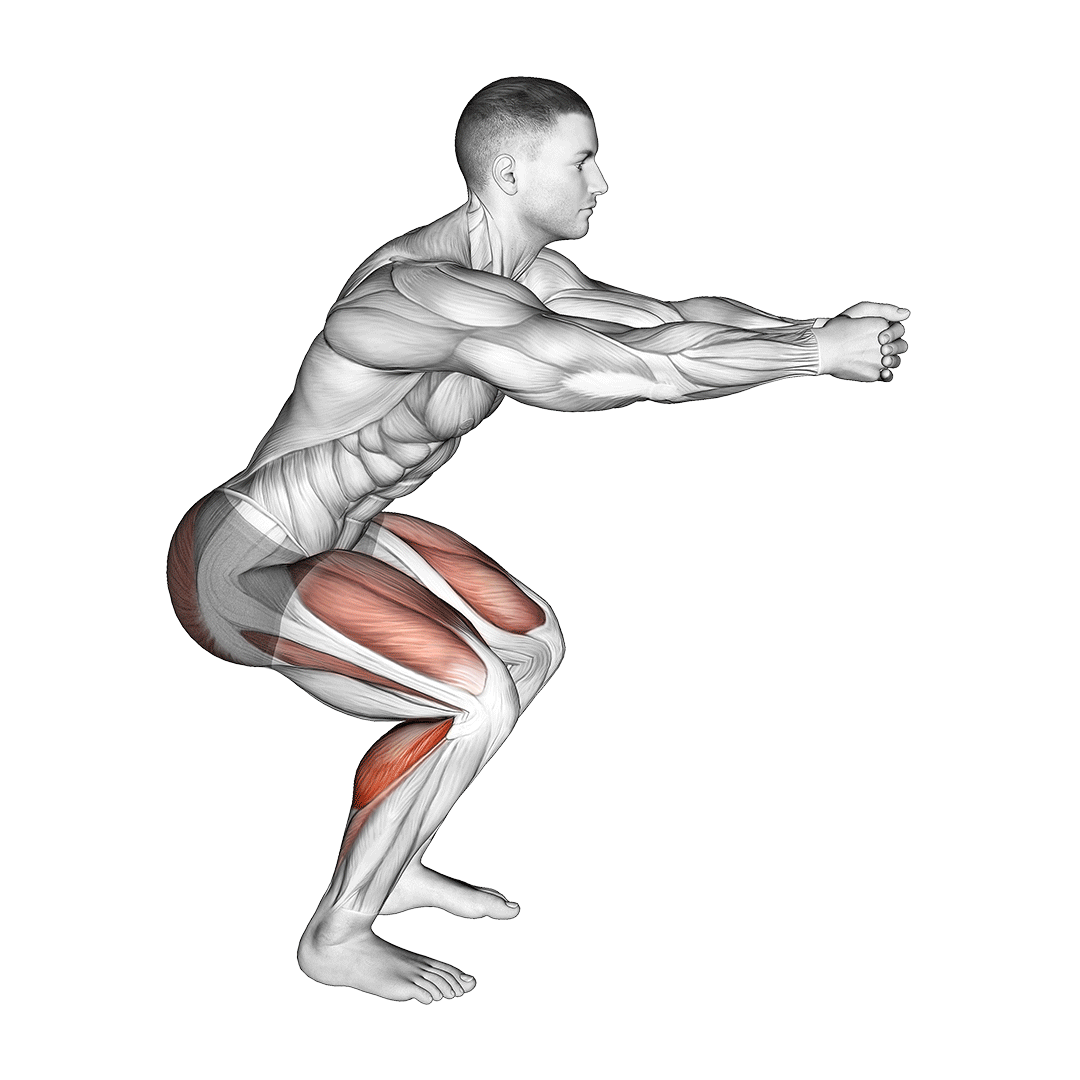
2. Seated Calf Raises
Though seated calf raises feature a far lesser degree of tension and will not target the calves through a full range of motion, they are nonetheless an effective alternative to the donkey calf raise, especially in terms of avoiding spinal loading, as is occasionally the case with the latter exercise.
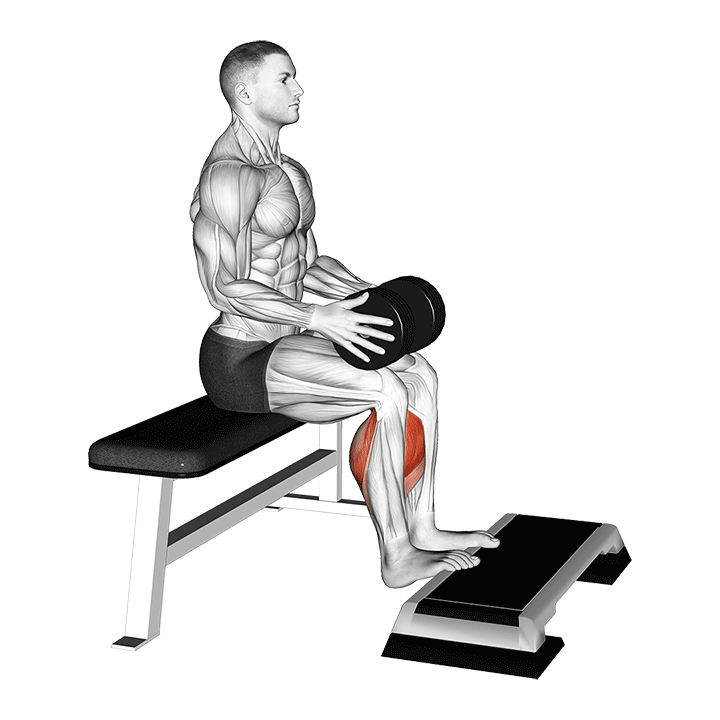
3. Donkey Calf Raise Machine
For lifters seeking a more machine-based training stimulus (and even longer time under tension), the donkey calf raise machine is quite literally a donkey calf raise performed within its own specialized resistance machine - allowing for greater safety and even more intense isolation of the calf muscles.

Frequently Asked Questions (FAQ)
What is the Point of Donkey Calf Raises?
Donkey calf raises are performed for the purpose of training the calf muscles, and are particularly effective at maximizing range of motion and time under tension.
They are often favored by bodybuilders due to their capacity to induce significant muscular hypertrophy, though athletes will also see many benefits from performing the exercise as well.
Are Donkey Calf Raises "Better"?
In certain aspects, yes - donkey calf raises feature a longer range of motion, more time under tension and do not necessarily require any sort of equipment.
If hypertrophy or functional fitness is among your goals, donkey calf raises may be a better choice than other calf raise variations.
How Many Donkey Calf Raises Should I do?
Donkey calf raises are most effective when performed at high volume, and as such a good starting point for most lifters is to perform 2-3 sets of 10-20 repetitions each, thereby ensuring that the calves get the optimal amount of stimulus to grow.
Final Thoughts
Regardless of whether your goals lie in strength, size, or something else entirely - the donkey calf raise is a solid exercise to add to your workout plan.
To see the greatest benefits from the exercise, ensure that you are performing sufficient volume per set, and that a stretch is felt at the bottom of each repetition.
If you are still unsure of how to go about programming the exercise - or any other aspect of fitness, for the matter - it is a good idea to seek out the advice of a professional coach.
References
1. Arampatzis A, Karamanidis K, Albracht K. Adaptational responses of the human Achilles tendon by modulation of the applied cyclic strain magnitude. J Exp Biol 210: 2743–2753, 2007. doi: 10.1242/jeb.003814.
2. Ema R, Saito M, Ohki S, Takayama H, Yamada Y, Akagi R. Association between rapid force production by the plantar flexors and balance performance in elderly men and women. Age (Dordr) 38: 475–483, 2016. doi: 10.1007/s11357-016-9949-3.

